See under the heading Non-visible content (not sure if this helps):
Google webmaster tools - About microdata
In general, Google won't display content that is not visible to the user. In other words, don't show content to users in one way, and use hidden text to mark up information separately for search engines and web applications. You should mark up the text that actually appears to your users when they visit your web pages.
There are a few exceptions to this guideline. In some situations it can be valuable to provide search engines with more detailed information, even if you don't want that information to be seen by visitors to your page. For example, if a restaurant has a rating of 8.5, users (but not search engines) will assume that the rating is based on a scale of 1–10. In this case, you can indicate this using the meta element, like this:
<div itemprop="rating" itemscope itemtype="http://data-vocabulary.org/Rating">
Rating: <span itemprop="value">8.5</span>
<meta itemprop="best" content="10" />
</div>
